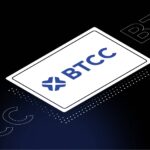In this review, we’re taking a look at Orderly Network, an omnichain CLOB infrastructure that unifies liquidity across blockchains. More specifically, we’ll be taking a look at what Orderly Network is, how it works, what kind of services it offers, how safe it is, and how it sets itself apart from the competition, with a special emphasis on its tokenomics. As a wrap-up, we’ll provide a short list of the platform’s pros and cons to give you a clearer overview of Orderly Network’s strengths and weaknesses.
About Orderly Network
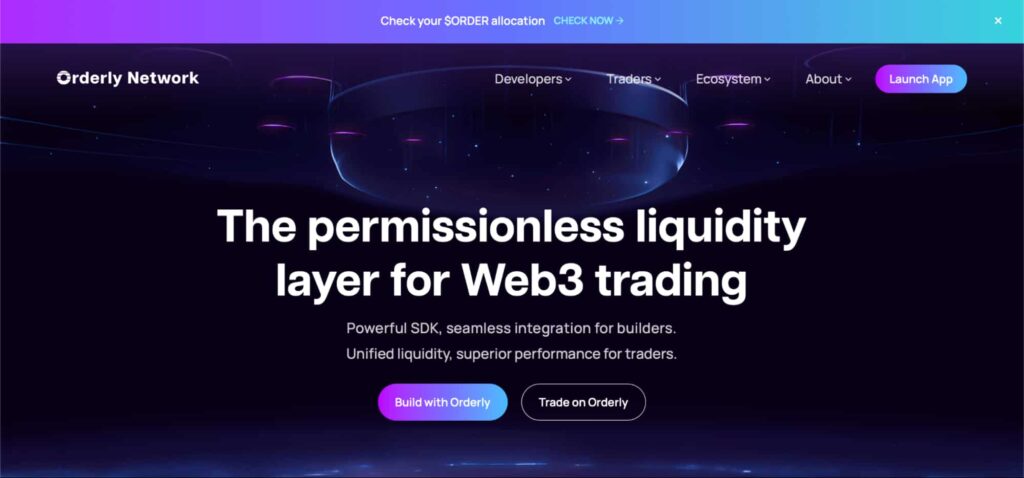
Orderly’s standout feature is combining the high efficiency of centralized exchanges (CEXs) with the decentralized principles of on-chain settlements and self-custody of assets.
With Orderly’s decentralized exchange (DEX), white-label solution, builders can efficiently create their trading platforms, leveraging existing liquidity and top-tier infrastructure.
The platform’s long-term vision includes developing an omnichain protocol, aiming to unify traders across various blockchain networks within a single, cohesive orderbook.
As an omnichain platform, Orderly champions chain abstraction, envisioning a future where transactions are seamless and the underlying blockchain becomes of less concern for the user. By centralizing liquidity, they aim to transform the crypto landscape, making bridging and wrapped assets a thing of the past.
Those who can potentially benefit from the platform include:
- Brokers;
- Spot and perpetuals aggregators;
- Digital asset custodians;
- Traders;
- DeFi game/dApp developers;
- Trading bot users.
How Does Orderly Network Work?
Orderly Network has three core components:
- The first component is its unified trading infrastructure, which combines the strengths of both centralized and decentralized exchanges to enable high-performance trading across multiple blockchain networks while upholding decentralization principles;
- The second key element is a robust liquidity layer designed for both spot and perpetual futures markets. By aggregating liquidity from various sources, this layer ensures efficient trade execution with minimal slippage;
- The third pillar of Orderly Network’s architecture is its orderbook-based system. Unlike many DEXs that rely on automated market makers, Orderly uses a traditional orderbook model, which offers greater transparency and enables advanced order types, such as limit orders and stop-loss orders. While the orderbook is maintained off-chain for performance, all settlements are conducted on-chain, ensuring both speed and security.
Products and Services Offered by Orderly Network
Orderly Network offers two key services:
- DeFi Building on Orderly Network;
- Trading on Orderly.
Let’s explore them both in more detail.
1. DeFi Building on Orderly Network
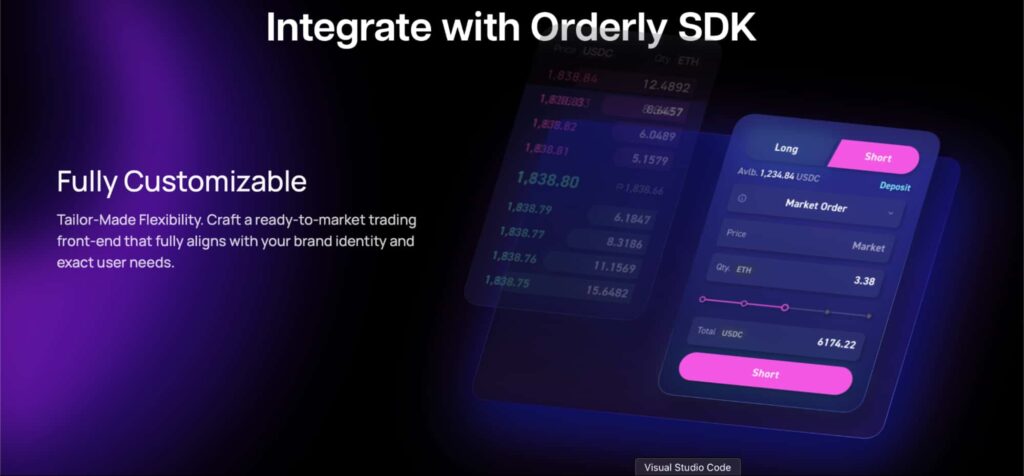
With Orderly’s APIs, users can build on Ethereum Virtual Machine (EVM) and NEAR:
EVM
One of the key offerings is the ability for builders to create their own Perpetuals (Perps) DEX using a shared liquidity Central Limit Order Book (CLOB) trading infrastructure. This infrastructure is accessible across all major EVM chains, allowing seamless integration.
For traders, this means you can trade on Polygon and seamlessly interact with traders on other chains like Arbitrum or AVAX without leaving your ecosystem by simply connecting your wallet to your preferred dApp and trading.
The architecture of Orderly is organized into three main layers:
- The Asset Layer used for activities such as registering, depositing, and withdrawing;
- The Settlement Layer, which operates on a single chain and functions as a transaction ledger;
- The Engine Layer, which handles orderbook and order-related services.
NEAR
Builders can integrate features like swaps, spot trading, and perpetual futures for NEAR native assets, including BTC, ETH, NEAR, USDT, USDC.e, and NEAT, among others.
By leveraging NEAR’s technology, Orderly enables in-dApp Swaps for mass-market companies, powers DEXs with deep spot liquidity for major assets, and delivers a CEX-like perpetual futures experience on-chain, though some features are still under development.
2. Trade on Orderly
Orderly offers multiple ways for users to trade, providing flexibility through either API access or integrated front-ends built on the platform. One of the key benefits of trading on Orderly is that liquidity is shared across all applications listed on the platform. That means that users are accessing the same liquidity pool and orderbook regardless of which app they use to trade.
While Orderly doesn’t have an official in-house DEX, various teams have developed graphical user interfaces (GUIs) that run on the Orderly infrastructure. The central limit order book (CLOB) within Orderly combines the strengths of both centralized and decentralized exchanges, which allows it to deliver the performance of a centralized exchange while maintaining the transparency and self-custody benefits of decentralized exchanges.
Because all orders are settled on-chain, the Settlement Layer coordinates deposit and withdrawal instructions between the Engine Layer and the Asset Vaults, ensuring the user’s on-chain balance is updated accordingly.
Orderly offrs perpetual futures and spot trading:
- Perpetual Futures: Perpetual Futures contracts allow traders to speculate on price movements with leverage, enabling profits from both rising and falling markets without owning the underlying asset;
- Spot Trading: Spot trading involves the immediate buying and selling of assets at their current market price, with the trade being settled on the spot. On Orderly, all spot trading pairs are against USDC and are conducted without leverage, requiring the direct exchange of USDC in every trade.
The $ORDER Token
Central to the Orderly Network ecosystem is the $ORDER token, designed to decentralize the protocol, drive network growth, incentivize user participation, and maintain the platform’s economic stability. With rapid advancements in blockchain technology becoming the industry norm, Orderly Network seeks to meet the growing demands of global financial systems by streamlining transactions while adhering to decentralization principles that attract users to blockchain in the first place.
The $ORDER tokenomics are carefully crafted through a well-planned distribution strategy and incentive mechanisms. As such, the token supports governance, staking, liquidity, and community engagement, which ensures an equitable economic environment where value is distributed fairly, and contributions are recognized.
The economic ecosystem of Orderly Network is composed of various participants, each playing a crucial role in supporting the platform’s DeFi objectives. Let’s explore each of them in more detail:
Market Makers
The role of the market makers is to provide liquidity to the market and thus stabilize prices and enable smooth transactions for other users. By placing buy and sell orders within Orderly Network’s trading infrastructure, market makers help traders execute orders efficiently without causing significant price changes. In turn, they are rewarded with $ORDER tokens to incentivize ongoing liquidity provision essential for the network’s efficiency.
Traders
Traders actively engage in buying and selling assets on the Orderly Network. This helps drive the network’s dynamism and price discovery. By interacting with the liquidity provided by the above-mentioned market makers, traders enhance the trading volume and liquidity depth. Traders also play a crucial role in establishing the fair value of assets within the ecosystem.
$ORDER Holders
$ORDER holders are the owners of the native token of the Orderly Network, which gives them a stake in how the platform operates. That is, holding $ORDER tokens grants voting rights in governance decisions, allowing holders to influence the platform’s direction and policies. Their commitment to holding and utilizing $ORDER tokens strengthens the network’s stability and governance integrity.
Builders
Builders are the innovators behind the applications and services on the Orderly Network. They develop decentralized applications (dApps), smart contracts, and protocols that enhance the network’s functionality. As Orderly Network serves as an infrastructure layer, builders are essential in driving innovation, fostering adoption, and leveraging the network’s capabilities to address real-world challenges. Builders may receive incentives such as grants, dApp fees, or funding from the network’s treasury for projects that significantly contribute to ecosystem growth.
In short, the collaboration between market makers, traders, $ORDER holders, and builders creates a dynamic trading environment that drives growth and innovation. Market makers and traders sustain liquidity and activity, $ORDER holders ensure governance and security, and builders propel continuous innovation and utility.
$ORDER Token Utility
The utilities of the $ORDER token are deeply integrated into the platform. Some of its key utilities include:
- Governance Rights: Staking $ORDER allows token holders to participate in decentralized governance over critical aspects of the Orderly Network. Details on the governance process will be announced soon;
- Earning VALOR: VALOR (see the VALOR section below) is a measure of a user’s $ORDER staking position based on amount and duration, granting users a share of the protocol treasury;
- Boosting Trading Rewards: Traders who stake $ORDER receive a higher share of trading rewards;
- Boosting Market Making Rewards: Market makers who stake $ORDER gain a larger share of market-making rewards;
- Other Utilities: Additional utilities for the $ORDER token will be introduced in future Orderly Network products and third-party DeFi protocols.
VALOR
VALOR is a unique metric that represents a user’s staking position for $ORDER, based on the amount and duration of their stake. It is not a token in and of itself, so it cannot be transferred or traded.
Users can earn VALOR only by staking $ORDER or esORDER, and they can redeem it solely for USDC. The redemption rate depends on the amount of USDC in the treasury and the circulating supply of VALOR (about 4.13 VALOR is distributed equally to the user’s stake portion every second).
The treasury pool is funded with 60% of Orderly’s net fee revenue, updated daily. At launch, the treasury starts at $0 and grows as the protocol earns fees. Users can redeem VALOR at any time, but redemptions are processed at the end of each 14-day batch period. All redemptions in a batch settle at the same VALOR price, regardless of when they were submitted. Once redeemed, VALOR is burned, reducing the total supply and increasing the value of the remaining supply.
Orderly Network Fees
EVM trade fees vary depending on which front-end the order is placed on. That is, they are set by the front-end itself. For NEAR trades, Orderly imposes a tiered fee structure, which differs depending on whether you are engaging with spot or perpetual futures trading.
Future trading fees are collected in USDC while Spot trading fees are deducted from the converted token. That is, if you convert USDC to ETH, you will incur fees in ETH.
At the time of writing, the tiered fee structures for NEAR are:
Perpetual Futures Trading Fees
| Tier | 30-day Futures volume | Maker | Taker |
| 1 | $0 – $500K | 0.03% | 0.06% |
| 2 | $500K – $2.5M | 0.02% | 0.05% |
| 3 | $2.5M – $10M | 0.02% | 0.05% |
| 4 | $10M – $100M | 0.01% | 0.04% |
| 5 | $100M – $250M | 0.01% | 0.04% |
| 6 | Above $250M | 0.00% | 0.04% |
Spot Trading Fees
| Tier | 30-day Spot volume | Maker | Taker |
| 1 | $0 – $500K | 0.10% | 0.10% |
| 2 | $500K – $3M | 0.08% | 0.09% |
| 3 | $3M – $10M | 0.06% | 0.08% |
| 4 | $10M – $50M | 0.04% | 0.07% |
| 5 | $50M – $100M | 0.02% | 0.06% |
How to Connect Your Wallet to Orderly Network
Connecting your wallet to Orderly Network is straightforward. First, head over to the Orderly Network website and click on the Launch App button in the upper right corner (as shown below):

Once you’ve done that, you will be redirected to a new page. Once there, click on the Connect button in the lower middle part of the interface (as shown below):

You will have an option to connect your Bitget wallet or use WalletConnect. To proceed, choose your desired wallet.
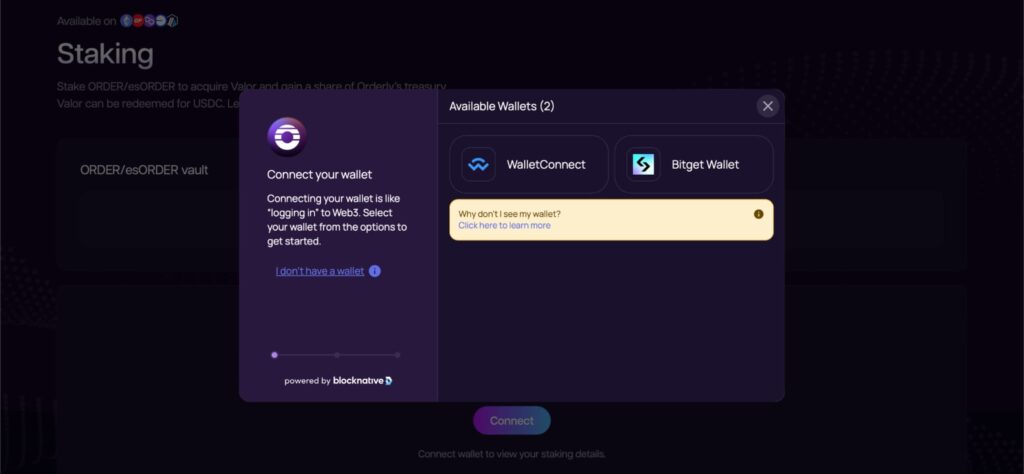
Here, we shall use WalletConnect. Once you’ve clicked on the WalletConnect option, you will receive a QR code you can scan to connect:
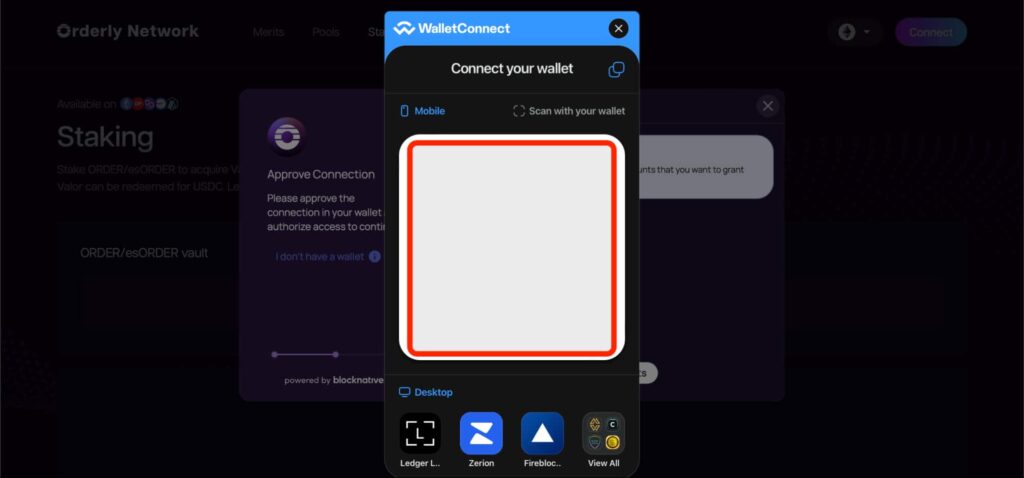
To proceed, simply open your wallet app on your mobile device and scan the code.
Why Should Users Choose Orderly Network?
Orderly Network offers several key advantages that make it a compelling choice for users. With a unified orderbook and liquidity, users can seamlessly access all major chains through a single trading infrastructure. This ensures a smooth and integrated trading experience across various platforms.
For developers, Orderly provides quick and easy development options. By leveraging Orderly APIs, developers can potentially reduce the time and capital required to launch their projects. Additionally, the Orderly orderbook is supported by top-tier Market Makers, ensuring consistent liquidity.
Orderly also offers a revenue-sharing model that allows users to earn a share of the fees. This helps combine high-frequency trading strategies associated with CEXs with on-chain transparency, all while ensuring self-custody of user funds.
Other standout features of Orderly include gasless trading and one-click functionalities, where a new trading key pair is created at the start of each session, eliminating the need for repeated signatures or approvals. Since users alone have access to their private keys, they retain full control of their assets.
Is Orderly Network Safe?
Security and self-custody are foundational principles in Orderly Network’s design, combining the strength of decentralized systems with the efficiency of centralized exchanges. As of the time of writing, the platform has a score of 87 on CertiK, the leading blockchain safety rating protocol:
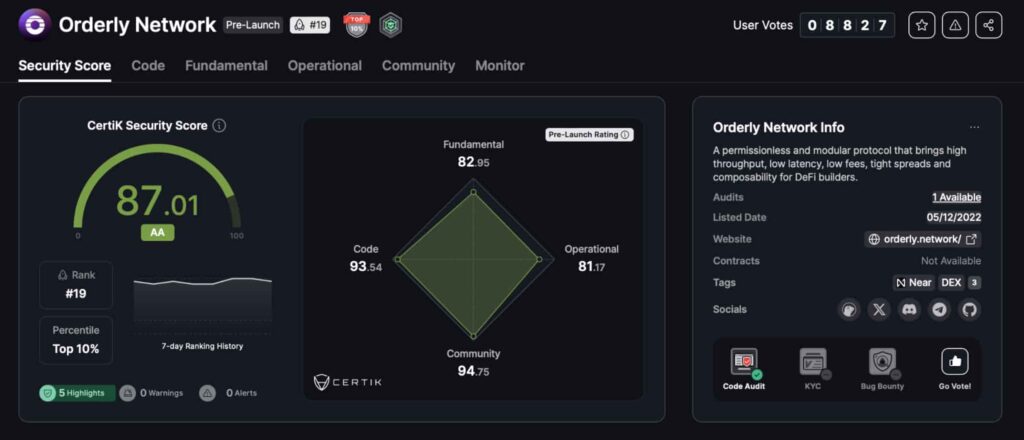
Orderly Network promises users will always retain full control of their assets and that their funds remain securely in their own wallets or smart contracts. Funds are only transferred to trading contracts when users are actively engaged in trades.
The platform leverages advanced cryptographic techniques and secure multi-party computation to facilitate fast, off-chain order matching while ensuring all transactions are settled on-chain. This model delivers high-speed trading without compromising on security.
Orderly Network also enforces a comprehensive security framework, including regular smart contract audits (by CertiK), bug bounty programs, and multi-signature wallets for assets managed by the protocol.
In case of a security breach, Orderly Network has established incident response protocols and maintains insurance coverage to safeguard users’ assets.
MEV Protection
Orderly Network also includes a number of features to protect users from MEV (miner extractable value). MEV is a type of arbitrage that can be used to profit from the delay between transaction submission and confirmation. Orderly Network’s MEV protection features include:
- Fast Matching: The sequencer matches orders very quickly, which makes it difficult for MEV extractors to front-run trades;
- Batching: Transactions are batched together before they are submitted to the blockchain, reducing the risk of MEV;
- On-Chain Settlement: All trades are settled on the blockchain, ensuring that traders are not vulnerable to MEV attacks.
Pros and Cons of Orderly Network

Pros
- Omnichain infrastructure: The omnichain model facilitates seamless trading across multiple blockchains, unifying liquidity;
- Hybrid model: The combined efficiency of centralized exchanges (CEXs) and transparency of decentralized exchanges (DEXs) are a solid approach;
- Comprehensive tokenomics: The $ORDER token supports governance, staking, liquidity, and community engagement;
- Developer-friendly: There are APIs and tools available for building on EVM and NEAR;
- Gasless trading: Gasless trading eliminates the need for repeated signatures or approvals, simplifying the trading process.

Cons
- No in-house DEX: While Orderly provides infrastructure, it lacks an official in-house decentralized exchange;
- Ongoing development: Some features, particularly on NEAR, are still under development.
Conclusion
In conclusion, Orderly Network is a solid DeFi platform that combines the strengths of both centralized and decentralized exchanges. With its omnichain approach and robust liquidity infrastructure, it offers a seamless trading experience across multiple blockchains. Whether you’re a trader, developer, or market maker, Orderly’s features, such as its shared liquidity orderbook and tokenomics, provide a solid foundation for building and engaging in decentralized finance.
Indeed, since some aspects of the platform are still under construction, it is impossible to assess it holistically from angles that would satisfy all kinds of traders. However, the currently available features have a lot of potential use cases and hint at an even more innovative future for Orderly.
Disclaimer: The content on this site should not be considered investment advice. Investing is speculative. When investing, your capital is at risk.
FAQs about Orderly Network
What is Orderly Network?
Orderly Network is a trading platform that integrates an orderbook-based trading infrastructure with a strong liquidity layer, supporting both spot and perpetual futures orderbooks. As such, it doesn’t have a front end but instead powers the core of projects built on top of it.
Can you connect to Orderly Network for free?
You can connect your wallet to Orderly Network for free.
What are the fees like at Orderly Network?
Each broker determines their own fee rates. For spot trades, fees are taken from the converted token (e.g., converting USDC to ETH incurs fees in ETH). For perpetual contracts, fees are added to the position cost (denominated in USDC).
What blockchains can you build on using Orderly Network developer tools?
With Orderly Network’s Source Development Kit (SDK), you can build on Ethereum Virtual Machine (EVM) and NEAR.
What are some Orderly Network’s SKD benefits?
Orderly Network’s developer tools offer benefits such as enabling builders to create decentralized exchanges (DEXs) with shared liquidity using its Central Limit Order Book (CLOB) across major Ethereum Virtual Machine (EVM) chains. For NEAR, it supports integration of features like swaps and perpetual futures, providing deep liquidity and a centralized exchange-like experience on-chain.
Does Orderly Network have its own DEX?
No, Orderly Network does not have its own in-house decentralized exchange.
What is the $ORDER token used for?
The $ORDER token supports governance, staking, liquidity, and community engagement.
Can you earn rewards on Orderly Network?
Yes, traders can earn rewards through trading and staking $ORDER tokens. Additionally, market makers are incentivized with $ORDER tokens to provide liquidity.
![Orderly Network Review [2024] | Permissionless Web3 Liquidity Platform](https://assets.finbold.com/uploads/2024/08/Orderly-Network-review-1024x683.jpg)


